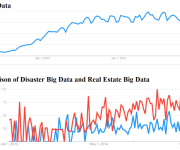The Rising Role of Identity in Cyber Defense
Have you ever worried about your online identity falling into the wrong hands? In today’s digital world, that fear isn’t just reasonable—it’s necessary. Traditional tools like firewalls and antivirus programs aren’t enough on their own. Now, your identity—how you log in, who you are, and what you’re allowed to access—is a huge part of staying safe online. As more businesses shift to remote work and cloud systems, identity-based security is quickly becoming a top priority.
In this blog, we will share how identity plays a central role in cyber defense, the challenges it brings, and why it’s becoming the go-to solution in fighting cyber threats.
Why Identity Matters More Than Ever
Today’s cybercriminals don’t just try to break through firewalls—they steal usernames and passwords. Once they have your login details, they can act like you and get into sensitive areas. This makes identity a key target for attackers. Instead of forcing their way into a system, hackers often find it easier to trick users or steal credentials. This means that businesses must shift their focus from just protecting networks to protecting user identities.
As companies rely more on cloud apps and remote teams, managing identity becomes harder. Employees often use their own devices and work from different locations. This spread makes it difficult for IT teams to track who is accessing what, when, and from where. That’s why identity verification, role-based access, and login monitoring have become core parts of modern cybersecurity.
The Growing Threat of Identity-Based Attacks
With identity now at the center of digital life, attackers are finding new ways to exploit it. Phishing emails trick users into sharing login info. Social engineering scams convince people to give away details they normally wouldn’t. Once criminals have that access, they can move around inside a network undetected. This makes it very difficult for traditional security tools to stop them.
To protect from identity-based attacks, companies must think ahead. It starts with strong passwords, two-factor authentication, and smart login tracking. But that’s not enough. Businesses also need to watch for unusual behavior, such as someone logging in from a new location or trying to access something they have never accessed before. By focusing on identity as a first line of defense, organizations can catch threats early and stop them before damage is done.
The Shift from Perimeter to Identity Security
In the past, companies focused on building strong perimeters—like walls around a castle. Firewalls and VPNs were designed to keep bad actors out. But today, those “walls” are full of holes. With remote work, mobile devices, and cloud apps, people now access networks from everywhere. There is no longer one single point of entry to protect.
This shift has forced cybersecurity to change. Instead of focusing on where someone connects from, security now looks at who they are and what they’re doing. Identity becomes the new perimeter. Every access request is a chance to check if the user is real and if they should be allowed to do what they’re trying to do. This way of thinking helps stop attacks before they even begin.
Zero Trust: A Model Built on Identity
One of the most talked-about cybersecurity strategies today is Zero Trust. At its core, Zero Trust means “never trust, always verify.” Even if someone is inside the network, they still must prove who they are every step of the way. This idea is built entirely around identity.
In a Zero Trust system, every login, access request, and action is checked. It doesn’t matter if the person is an employee or if they’ve logged in before. The system always double-checks their identity. This limits how far an attacker can go, even if they manage to steal credentials. They may get past one check, but they’ll be stopped at the next one. That’s why Zero Trust is becoming the foundation of identity-based cyber defense.
Multi-Factor Authentication as a Frontline Tool
Multi-Factor Authentication (MFA) is one of the simplest and most effective ways to improve identity security. Instead of just using a password, MFA asks for something else—a code sent to your phone, a fingerprint, or a face scan. This extra step makes it much harder for attackers to break in, even if they have your password.
More businesses are requiring MFA for all users, including employees, partners, and customers. This small step can stop many common attacks, especially phishing. But for it to work well, it must be easy to use. If MFA feels like a hassle, people may try to bypass it. That’s why user-friendly tools like biometric logins and single sign-on systems are growing in popularity.
The Role of Identity Management Platforms
Identity management platforms help businesses control who can access what. These tools create a single system to handle all logins, permissions, and roles. Instead of giving everyone the same access, they tailor it to each person’s job. This “least privilege” approach keeps sensitive information safe and limits what an attacker can do if they get in.
These platforms also make it easier to spot problems. They track login times, devices used, and unusual behavior. If someone suddenly tries to access files they’ve never touched before, the system can alert the security team right away. This real-time monitoring is key to stopping threats before they spread.
Balancing Security with User Experience
Strong identity protection is important, but it shouldn’t make life harder for users. If security steps are too complex, people may skip them or find workarounds. This can actually create more risk. That’s why businesses need to strike a balance between safety and ease of use.
The best identity tools are the ones people barely notice. They work quietly in the background, checking for risks without getting in the way. Single sign-on, for example, lets users log in once and access multiple tools. Biometrics like fingerprints are fast and simple. When users feel secure and not frustrated, they’re more likely to follow security rules.
In conclusion, identity is no longer just about usernames and passwords—it’s a powerful tool in the fight against cyber threats. As more of our lives move online, protecting identity becomes a top priority for businesses, governments, and individuals. By focusing on who is accessing systems and how, we can build a smarter, safer way to stay connected.
























